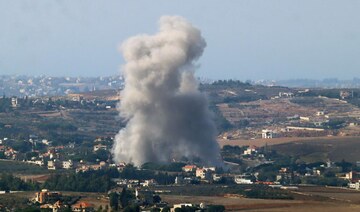LONDON: A report released on Tuesday from Action for Humanity International, one of the UK’s leading humanitarian agencies operating in Gaza, reveals the conditions faced by internally displaced people after Israel’s displacement orders to Palestinian civilians.
The report claims that these orders, along with conditions in designated “humanitarian zones,” are creating life-threatening environments that amount to “systematic erasure.”
The findings underscore the severe challenges facing Palestinian civilians during Israel’s war with Hamas.
According to the survey, 15 percent of respondents were unable to evacuate due to disability or caregiving responsibilities, a reality compounded by the fact that 35 percent of people received less than an hour’s notice of evacuation orders.
The survey also found that 98 percent of respondents had been displaced several times, with nearly a quarter having been displaced 10 or more times in the past year.
In humanitarian zones conditions are reportedly dire.
According to the report, 73 percent of respondents described them as “poor” or “very poor,” with four out of five lacking sufficient access to food, and two-thirds unable to obtain clean drinking water. Additionally, 80 percent of respondents reported no access to adequate medical care.
Charles Lawley, director of communications and advocacy at AFH, criticized the treatment of Gaza’s civilians, saying that, in his view, the situation in Gaza amounted to “erasure in plain sight.”
“This report shows that Gaza is being erased in plain sight,” he said. “The so-called ‘evacuation orders’ — and I hesitate to call them that, as that is the language used by the Israeli military and implies it is doing the people of Gaza a favor by giving them a warning before bombing their homes — inflict terrors, are ambiguous and difficult to comply with, on the occasions they are given.”
Lawley further condemned the conditions in the so-called humanitarian zones.
“The conditions are not fit for humans ... with such damage to infrastructure, the bombing of Gaza, even with so-called evacuation orders, puts people who cannot afford the transport to escape and those with caregiving or physical barriers to escape — such as pregnant women, the elderly, and people with disabilities — at a heightened risk of being killed, as escaping is even more difficult for them.”
In a strong rebuke of the ongoing military action, Lawley argued that the pattern of bombardment, ground incursions, and deprivation of basic resources suggested a coordinated strategy that “aligns with acts of extermination and genocide.”
He further suggested that recent reports indicating Israeli government intentions to annex Gaza raised additional concerns, noting that “these plans ... appear designed to inflict conditions of life aimed at the physical destruction of the group, in whole or in part ... as a strategic tool in broader aims for territorial annexation.”
The full report is available to read here.



























